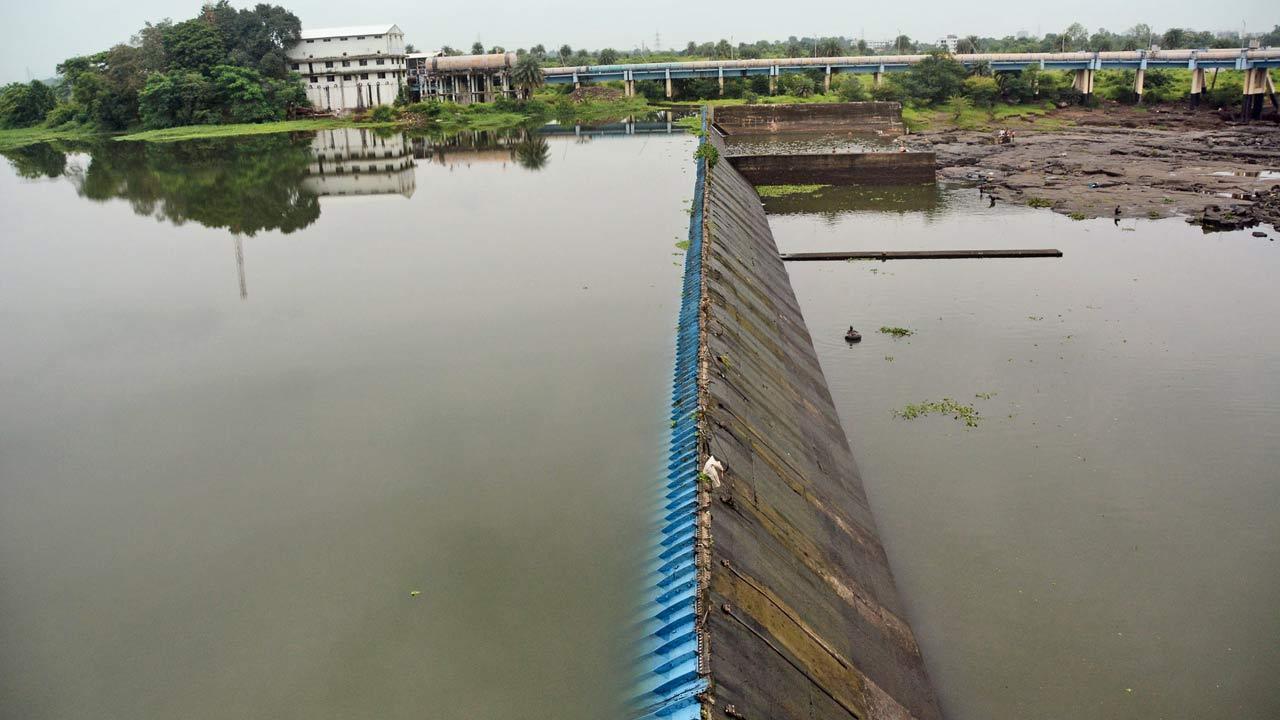Rising population, ongoing development throw wrench in plans to boost supply via Gargai dam, desalination plant

The dam on the Bhatsa, one of the seven lakes that supply 3,950 MLD of water to the city daily. File pic/Sayyed Sameer Abedi
The BMC is trying hard to make the Gargai dam project—110km northwest of Mumbai in Palghar district—a reality. A desalination plant, near Manori, is also in the planning stage. Despite these projects, the dream of a 24x7 water supply in the city will remain a distant dream.
ADVERTISEMENT
The BMC had appointed a consultant and had tried to implement a round-the-clock water project on a pilot basis in two wards—T (Mulund) and H West (Bandra to Santacruz). The Rs 275-crore project was launched in 2014 to improve water networks and supply water at all hours a phase-wise manner. However, six years after the project was initiated, the BMC managed to increase the water supply hours from three to only six. The programme wound up in 2020. “The water supply was inadequate. If the BMC had increased the water supply hours in these two areas, there would have been an impact on the supply to other areas,” said a civic official.
Currently, the city receives 3,950 million litres of water (MLD) every day from seven lakes and the BMC is trying to push the Gargai dam project, which will provide an additional 440 MLD. The desalination project can provide 200 MLD in the first phase. So, if these projects succeed, the water supply will
increase by 660 MLD in the next four to five years. However, 24x7 water supply will still elude the civic body.
The population has been increasing and several Slum Rehabilitation Authority (SRA) projects are underway. The BMC supplies 45 litres per person per day to slums, but if a building is constructed on the same plot, the demand increases to 135 litres per person per day.
“The current supply is not enough to provide an adequate amount of water to all, so even if the new sources are added, we can’t provide a full day’s supply,” said an official from the hydraulic engineering department of the BMC.
He added that the city’s hilly areas create a topographic hurdle. The city is divided into 240 zones to ensure the equal distribution of water.
However, the water pressure is relatively low in hillside areas as well as at the end of the network. “So, even if there is 24x7 supply, these areas won’t get water,” the official added.
45litres
Amount of water each person residing in slums receive daily
 Subscribe today by clicking the link and stay updated with the latest news!" Click here!
Subscribe today by clicking the link and stay updated with the latest news!" Click here!







